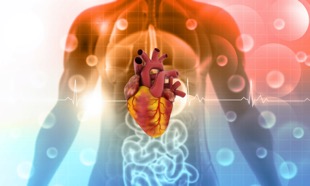Circulation

Problems with your circulation? These can range from cold fingers and toes to swollen legs and varicose veins, and can be a pain. Other nasty side-effects can be varicose veins and male impotence.
Poor circulation can be associated with many diseases, so it’s important to visit your GP to make sure that you get a thorough check up. After that, try these ideas to help improve your circulation.
Wear silver socks and glove liners
If you suffer from cold fingers and toes in the autumn and winter, try keeping your overall body temperature stable to help preserving the heat in your extremities. Wear lots of layers, and try glove liners and handwarmers when you go out.
The charity Scleroderma and Raynaud’s UK recommends wearing socks and gloves containing 12 per cent silver thread, which may help to direct heat back towards the skin (available from srukshop.co.uk).
To extend the use of handwarmers, wrap them in silver foil or place them in a sealed plastic bag until you need to use them again.
Stop smoking
Smoking can make Raynaud’s and poor circulation worse. It’s never too late to stop, and your overall health should start to improve as soon as you do. Stop smoking today!
Eat warming foods
Literally, this includes eating heated foods, as this can help to improve the circulation to the extremities.
Other foods that promote warming in the body include ginger and spices like cayenne and chilli. Ginger is a traditional remedy for warming the body and improving circulation. Try making a fresh ginger tea by simmering an inch piece of root ginger (either grated or chopped) in a litre of water for about ten minutes. Or, try adding ginger to your meals (link to recipes).
Having several small meals a day can also help to keep the body warm.
Other foods to improve circulation
Try eating more foods rich in omega-3 oils, such as oily fish (mackerel, trout and salmon), nuts and seeds and oils (olive oil, flaxseed oil), which can help dilate the blood vessels, to help the blood to flow more easily.
Also increase your intake of foods rich in antioxidants, especially vitamins C and E (e.g. citrus fruit and berries, potatoes, peas, leafy greens, nuts, seeds and avocado).
Calcium and magnesium found in dairy foods and cereals, may also help people with poor circulation during the winter.
Supplements
Some people swear by ginkgo biloba, but the evidence to support it is mixed. There is some research that ginkgo biloba can reduce symptoms in people with Raynaud’s. However, ginkgo biloba has also been associated with an increase in the risk of stroke. You must avoid gingko biloba if you’re pregnant.
Other popular supplements to improve circulation are evening primrose oil or flax seed oil, which are both rich in gamma linolenic acid (GLA), but there is not much evidence that they have any positive effect.
Horse chestnut and garlic have also been linked with circulation, and there is some research that shows that they can be effective. You can also try adding garlic to your cooking, as food tends to be a more effective way to absorb nutrients.
Drink lots of water
If you are dehydrated, your blood capillaries will close and circulation will be poor. So try to make sure that you drink plenty each day. An easy way to check if you are drinking enough is to look at the colour of your pee – it should be pale and straw-coloured.
Reduce stress
Why not see if mindfulness, meditation and relaxation exercise can help you keep on top of your symptoms by reducing your stress levels? Try our tips for managing stress here.
Massage
For a quick temporary benefit, massage can help improve circulation by helping blood get to all your extremities. Try soaking your feet in warm water, then knead the soles of your feet and your toes.
If you don’t fancy massage, just soaking the affected area in warm water will help to dilate the blood vessels and give you some quick relief.
Cut back on your salt
Salt is linked to high blood pressure, so try using less salt in your cooking. Choose low salt alternatives when you can, and avoid adding salt to your meals.
Exercise more
Any cardiovascular exercise will increase the number of blood capillaries in your body and improve circulation. Swimming is an excellent exercise for improving circulation. Or, you could try an exercise that addresses the part of your body that has the problem. For example, if you have a problem with circulation in your legs, you could try cycling.
Aromatherapy
Some people find that aromatherapy can help to reduce their symptoms. Some essential oils, e.g. ginger, black pepper and cinnamon, are thought to have a dilatory effect on the blood vessels. Others, such as roman camomile, cypress and lemon oil may strengthen weakened valves.
